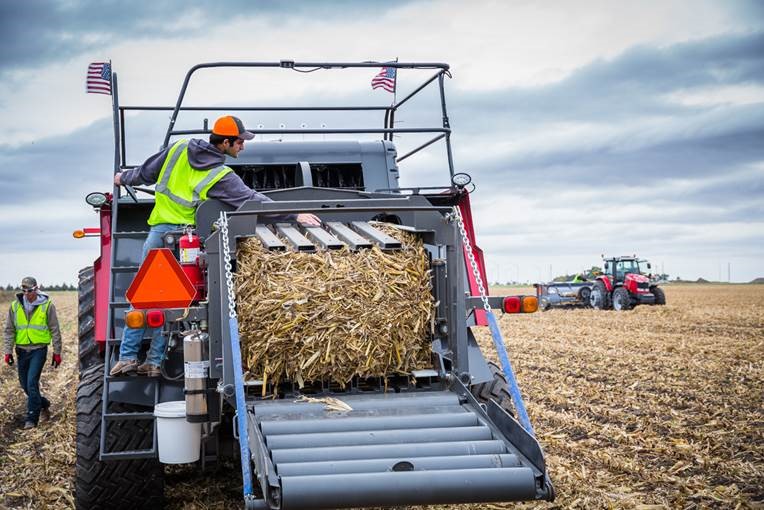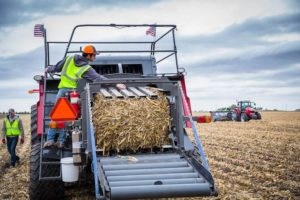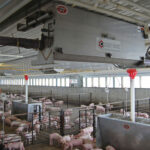The increasing benefit and necessity of efficient residue management in your fields
Come fall, you’ve put in almost a year’s worth of toil and sweat to reap a plentiful harvest. When that time comes, the next thing on your (or any farmer’s) mind is the crop residue left behind. As efficiency in...

The increasing benefit and necessity of efficient residue management in your fields
Come fall, you’ve put in almost a year’s worth of toil and sweat to reap a plentiful harvest. When that time comes, the next thing on your (or any farmer’s) mind is the crop residue left behind. As efficiency in...Come fall, you’ve put in almost a year’s worth of toil and sweat to reap a plentiful harvest. When that time comes, the next thing on your (or any farmer’s) mind is the crop residue left behind.
As efficiency in farming techniques have increased, production and stalk size have as well. Such a plentiful result leaves similarly plentiful stover. Managing stover and maintaining yields in subsequent harvests is becoming more and more challenging. Farmer has to manage their own residue, and it is a tedious and inefficient process presently. Too much stover can limit seed choices, require more tillage, limit planting populations, affect plant emergence, require increased spraying, and most importantly, hinder grain yield.
There is, however, another way to channel the byproducts of your harvest, which can not only benefit you financially but, can also contribute to the health of your fields, livestock, and subsequent harvests.

Those seemingly lifeless leaves and stalks, your stover, left languishing in your field after the previous harvest could become quite valuable as processes of energy conversion, feedstock, and a great many other applications continue to improve.
As innovations to handling, baling, and converting stover become more and more viable, it’s important for farmers to stay on the cutting edge of these developments for the future.
But you may have heard such practices, while allegedly profitable, can harm soil and cause issues to crop yields.
Years ago that may have been the case. Lighter corn yields meant less stover and less likelihood for problems. Soil damage and erosion are a constant concern. But we have learned that in many cases, the benefits of pulling some of the stover from the field are far from detrimental.
The science has improved significantly. It’s been shown that it is beneficial to remove some of the stover from the field. Not to mention in an agricultural climate where global surpluses have left many crops (particularly corn) at prices well below that of production, finding another means of income is vital.
But what are we really talking about? It’s simple, really. Plant and harvest as you always would. The same way you, and your father, and grandfather before him did. Following the harvest, however, you need only collect and densely bale the remaining stover. And if that sounds daunting, that’s where AGCO’s Biomass Solutions team can help you get it done.

Then of course comes the question – “What exactly do you do with it?” There are a number of companies that can utilize and add value to your stover. One such company that removes and bales densely packed stover is Pellet Technology USA (PTUSA). They convert the baled stover into feed pellets for your livestock, high in fiber, protein, energy and other nutrients essential to a healthy diet. These pellets provide a necessary source of food, with a key ingredient from the residue residing in your fields.
These feed pellets provide options for overwintering beef cowherd and/or ration inclusion in starter, grower and finishing rations.
Stover can also be converted to energy pellets. These “power pellets” are then sent to biorefineries for conversion into biofuels, particularly ethanol. There is currently a growing demand for such pelleted residue to produce these fuels, as the market for alternative fuel sources continues to grow.
When weighed against all factors, residue management will become a necessary step farms must take to remain profitable and healthy in today’s precarious agricultural climate.
And as innovations and processes for stover removal, baling, and conversion continue, more and more companies will join this movement to give farmers the necessary incentives to consider selling their ag residue.
The stover is there. Now we must develop the infrastructure to catch up.
We mentioned PTUSA above as one of the industry leaders in stover removal, dense baling, and pelleting. Next time we’ll be venturing more into what is done, the marketplace, and how farmers will greatly benefit from the services they provide.
Stay tuned for that post in the coming weeks.



